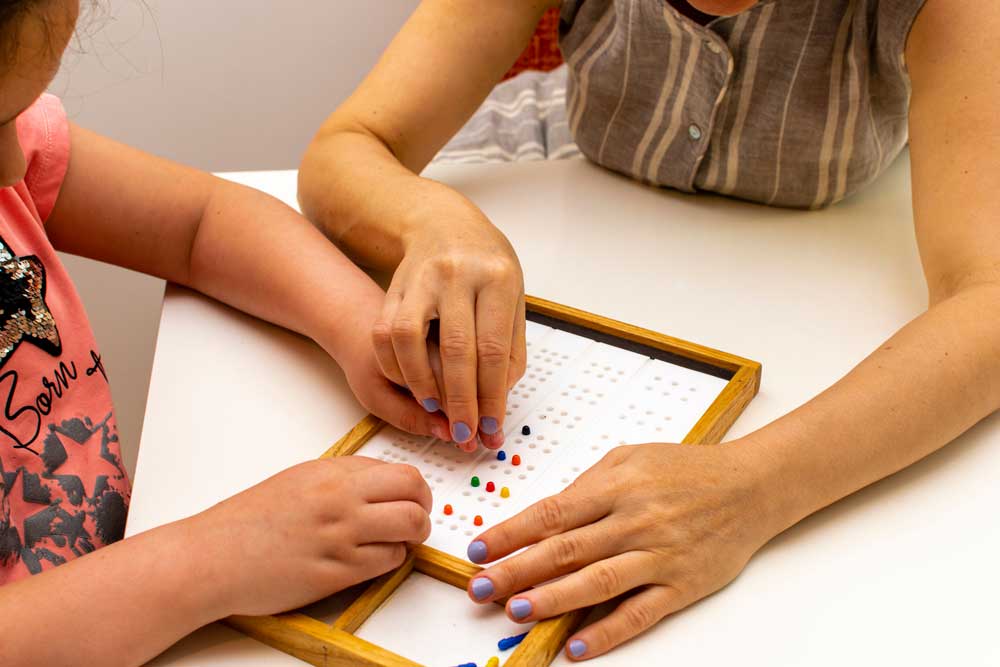Dentist Rajalakshmi SJ was afflicted with polio at a very young age. Despite numerous physical and emotional challenges, she didn’t let this come in the way of her dreams, and used STEM education to enter the medical field. She is a scientific researcher and also works with the WHO as a wheelchair service peer trainer. Rajalakshmi is an example that STEM education can benefit everyone, and should be inclusive.
STEM Education For Differently-Abled Girls
Every child, irrespective of their abilities, deserves equal opportunities for learning and growth. Unfortunately, due to the lack of inclusive spaces and trained instructors, STEM education has not percolated to those who are differently-abled. The benefits of art and other creative fields are now widely propagated among those who are looking to build skills and a career. However, scientific subjects are still considered more cerebral, and therefore out of reach. In the case of differently-abled girls, the barriers are even more difficult to overcome. In addition to the already-prevailing gender gap, they also have to deal with challenges due to their disabilities.
Challenges Faced
Girls with physical limitations require lab spaces and classrooms that are accessible, along with equipment and technological aids. In addition, they are also left out of research and fieldwork activities that enhance practical learning. Preconceived notions still exist about the capabilities and commitment of a differently-abled girl, who can contribute to STEM fields. For girls with learning disabilities, this is compounded. Factors like ADHD, non-verbal learning disabilities, and visual motor deficit lend themselves to discrimination. There is also a distinct lack of role models in the field of STEM, with barely any differently-abled women. Although STEM diversity programmes address the gap in the areas of gender and race, ability hardly ever counts.
Eng Nabil Eid, a disability inclusion architect from the UAE wrote an article on LinkedIn that said, ‘A significant barrier exists for girls with disabilities, who are often overlooked in STEM initiatives. This not only limits their opportunities but also deprives the field of their unique talents and perspectives. Why does this crucial aspect often fall by the wayside, dismissed under the guise of insufficient information? Do we unconsciously prioritise the needs of those without disabilities, assuming they are more capable of engaging in STEM initiatives? Such assumptions not only perpetuate exclusion but also undermine the potential and contributions of individuals with disabilities. Here's the question: Are we truly harnessing STEM's full potential if a sizable portion of the population faces hurdles to participation? The answer is a resounding no.’

Tools For Differently-Abled Girls
Even though they face challenges, this doesn't mean that girls cannot get ahead in STEM fields. Right from the early years, STEM tools can enhance a child’s cognitive skills and propel her in the right direction, geared towards embracing and acing a career in the sciences. Dr Surekha Raman, a special educator in Chennai, shares some pointers about how young girls can benefit from STEM, and grow up to be women to contribute to the field.
Start Young: The formative years of every child’s life are important, but it is crucial that a differently-abled child is equipped with the right tools and the right attitude as early as possible. Even activities such as LEGO building can foster engineering and architectural skills when supervised by the right instructor. Providing young with the right materials and learning techniques, along with the confidence to explore their inner scientists and mathematicians, can do wonders for them.
Assisted Learning Technology: Harnessing the use of technology for STEM learning is becoming common, and should be used with discretion by a trained and qualified instructor. There is speech-to-text / text-to-speech software that benefits those who cannot operate machines. Virtual reality and augmented reality help in understanding complex concepts, while sensory devices such as eye-tracking technology and adaptive switches are a boon to those who require alternative sensory input methods.
Visual Aids: Remember, differently-abled girls may not be able to process information the same way as their mainstream peers. In such a situation, one should rely on graphic aids such as Venn diagrams, flowcharts, maps and so on. They respond to pictorial data better than verbal data.
Benefits Of STEM Education For Differently-Abled Girls
- Learning STEM subjects increases their skill development and logical reasoning through problem-solving and analytics.
- The sciences pique curiosity and interest in young girls, to discover the mysteries of the world around them and make a difference in various disciplines.
- STEM education increases cognitive development and the regular use of equipment can also increase motor skills.
- It teaches them concepts such as innovation, creativity, and teamwork.
Despite the ongoing dialogue to provide a more inclusive environment for disabled girls in STEM education, there are still several gaps that need to be filled. Infrastructure is still lacking in most cases. Government bodies and private policymakers need to relook at structuring policy frameworks. Only then, can we ensure a safer and more inclusive environment for differently-abled girls who wish to pursue STEM education for both personal growth and professional success.